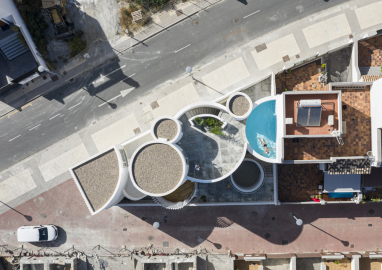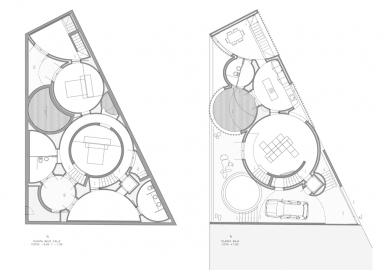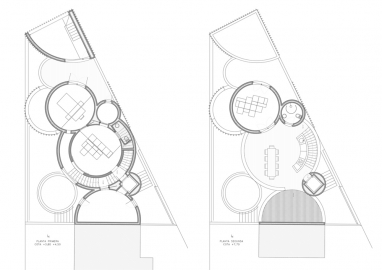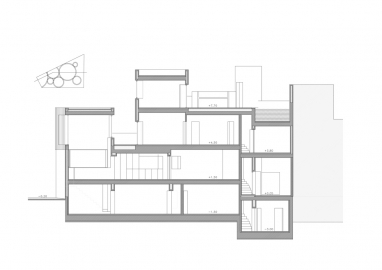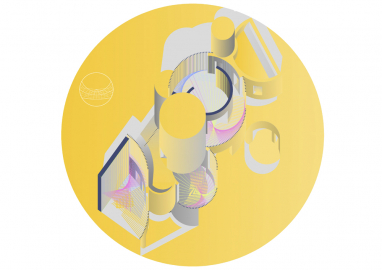Casa Cero
Behind the architectural commission lay the wish of the owners to inhabit an intimate space that could provide a tranquil environment and a place to recover from the unfortunate accident that had deprived their son of most of his sensory abilities. The aim is to join the everyday and phenomenology to enable the experience of life through this architecture.
The Casa Cero is located in a new development on the outskirts of Motril, a coastal town in the province of Granada. The building code of this section of the city has produced blocks densely packed with dissimilar and closely huddled constructions, to the point that they encroach on one another's privacy. Within this hodgepodge of edifices, the house is located on a practically triangular plot situated at the end of a block comprised of a row of single-family homes. This plot had long remained vacant, probably due the challenge posed by a geometry that was incompatible with producing a housing typology along the lines of the neighboring development.
The characteristics of the setting and the needs of the house's inhabitants, the Casa Cero is tackled following two principles that coalesce around a single spatial strategy. The first is more disciplinary and is based on the idea of the construction of an island within the described context which could materialize into a formally precise architecture and accommodate an ambitious program in a geometrically complex plot. The second is more experimental, and it delves on the perception of domestic space according to the different ways its dwellers experience everyday life. In this case, architecture is used as a tool that intensifies the notions of time and space by means of creating—through form—changing atmospheres which, on the one hand, generate different domesticities and, on the other, anchor inhabitation. All in all, the aim is to join the everyday and phenomenology to enable the experience of life through this architecture.
The house is configures by means of a sequence of circular spaces that lack any sort of edges, thus softening, neutralizing and toning down the spaces. Architecture is used as a tool that intensifies the notions of time and space by means of creating—through form—changing atmospheres. Soft light degrading along the curvatures, encourages a sense of serenity.
The cylinders are either tangent to one another, begin below ground level and rise above the street; placed within each other, or are cut by the plane of the facade and the party wall thus adapting to the building code, and the relationship with neighboring property lines.
These cylinders leave voids in the form of patios and terraces that establish of relationships between interior and exterior spaces. The diversity of voids enables each circular space to look onto a different patio, providing a unique identity to what otherwise is a sequence almost identical of circular spaces.
Several entranceways and staircases, produce endless circulation possibilities, that generates multiple options regarding the layout of each room. The realms of the public and the private can be redefined and configured at will.
The massive spaces between the cylinders play a structural role, while they also accommodate installations and the openings for the windows and doors. Occasionally, due to their size, these areas become storage spaces, niches and alcoves. The width of the cylindrical walls varies in order to absorb the breadth of the flat window panes.
The budget was very tight. In order to achieve these complex forms and define them with precision, artisanal brick masonry work was employed and standardization was avoided. Concrete slabs sit on load bearing brick walls of different widths and curvatures, or on the occasional column. The lintels and sills were all executed in situ, along with the plaster finishes and continuous floors. In this way, the inaccuracies that may have derived from the construction process were easily corrected during later work phases. To this traditional form of building and layering contemporary techniques and materials are added. Applied like a “cake icing”, the components of the building's envelope thus reconcile the complex building requirements of contemporary architecture with the material continuity that this house conveys.

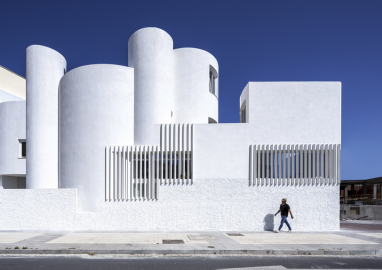 © JESUS GRANADA
© JESUS GRANADA
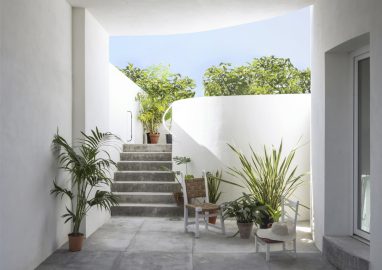 © JESUS GRANADA
© JESUS GRANADA
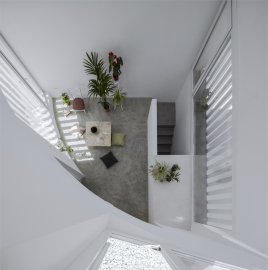 © JESUS GRANADA
© JESUS GRANADA
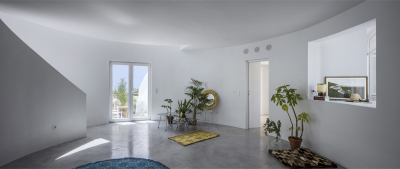 © JESUS GRANADA
© JESUS GRANADA
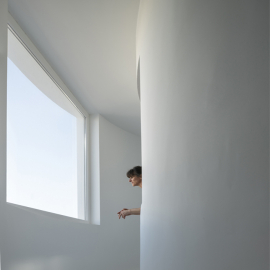 © JESUS GRANADA
© JESUS GRANADA
